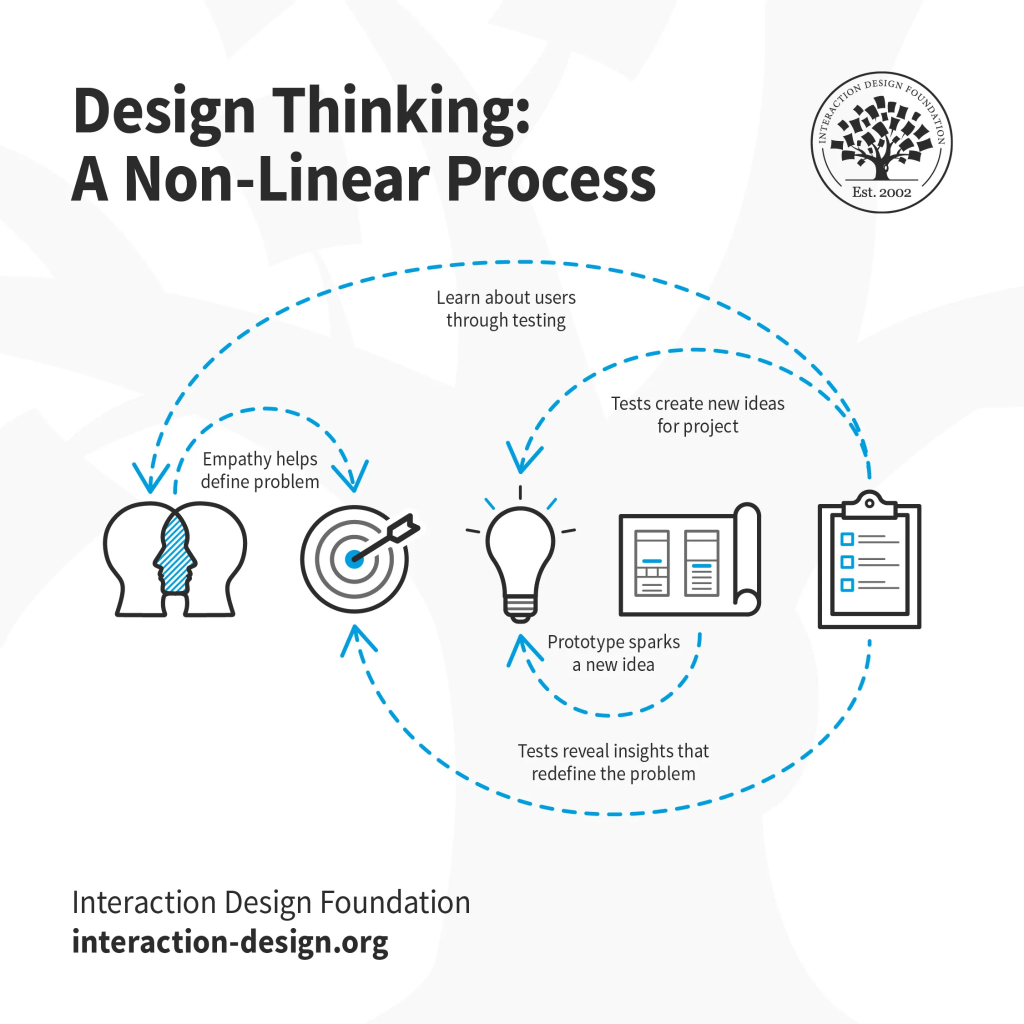Introduction:
Design thinking is an innovative problem-solving approach that has gained popularity in various fields such as engineering, science, design, and business. The process follows a series of steps that bring the principles of design thinking to life. And In the recent session of Design Culture Learning Series hosted by Arch College of Design & Business, Ms. Palakshi Pal, Design Thinker, and Educator, spoke on the topic of Design Thinking & Teams and their role in Design Thinking in a collaborative approach to cross-functional teams. She emphasized that design thinking not only builds commitment but also optimizes resources and communication, leading to accelerated product development, enhanced innovation, and higher employee engagement.
In the session, She also talked about the Five Stages of Design Thinking: empathize, define, ideate, prototype, and test whichprovides a structured framework for teams to collaborate and tackle complex and undefined problems.

Empathize and Define:
The first two stages of design thinking, empathize and define, lay the foundation for effective problem-solving.
During the empathize stage, researchers immerse themselves in understanding the needs and desires of the users. By gaining valuable insights into their experiences and challenges, the team can develop a deep understanding of the problem at hand.
In the define stage, this information is organized, and the problem is framed in a human-centered way. This ensures that the solutions generated to address the users’ needs effectively, setting the stage for innovative thinking.
Ideate and Prototype:
The ideate stage is where the creative juices flow. In this phase, cross-functional teams come together to brainstorm and generate a multitude of innovative ideas. By encouraging diverse perspectives and leveraging the collective intelligence of the team, design thinking sparks creativity and fosters breakthrough thinking. These ideas are then transformed into tangible prototypes during the next stage, where concepts are brought to life and made testable. The iterative process of prototyping allows for continuous refinement and improvement until the best solution is identified.
Test and Iterate:
Testing and iteration are critical aspects of design thinking. During the testing stage, prototypes are evaluated, and user feedback is gathered. This feedback is invaluable as it informs further iterations and improvements to the solutions. By embracing an iterative approach, design thinking ensures that the final product or solution truly meets the needs of the end-users. This constant feedback loop allows for continuous learning and refinement throughout the process.
The Power of Design Thinking:

Design thinking is particularly effective in addressing complex problems that cannot be solved using traditional methods. It combines logic and creativity to find innovative solutions that are attainable, sustainable, and can be drawn from different domains. This approach is crucial for creating user-friendly experiences and taking a user-centric approach to problem-solving in product and platform engineering. Additionally, design thinking can provide valuable support to businesses and is applicable in various industries, including healthcare. To ensure a successful outcome, it is important to adhere to three key principles borrowed from design thinking: desirability, viability, and feasibility. These principles help to shape a great product that meets the needs of users while being technically feasible and economically viable.
Conclusion:
Design thinking is a powerful problem-solving approach that fosters collaboration, innovation, and user-centricity. By following the five stages of design thinking, cross-functional teams can effectively address complex challenges and develop impactful solutions. This methodology optimizes resources and communication, accelerates product development, and enhances decision-making. Furthermore, design thinking promotes a collaborative work culture, breaking down functional silos and fostering shared responsibility among team members. As companies like Airbnb have demonstrated, design thinking is a key driver of success, allowing organizations to stay ahead of the curve and drive progress in their respective industries. By embracing design thinking, teams can unlock their creative potential and create a positive impact through collaborative problem-solving.
